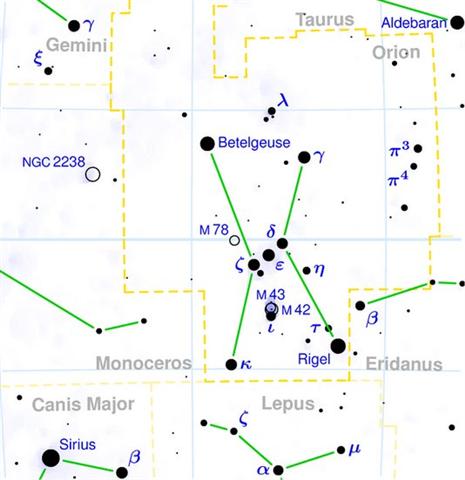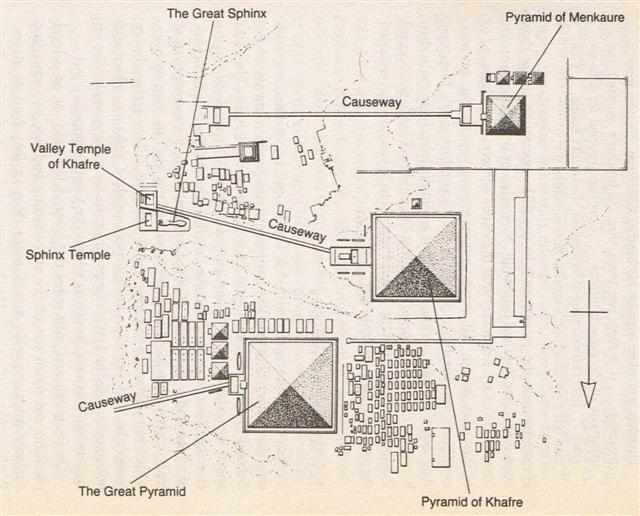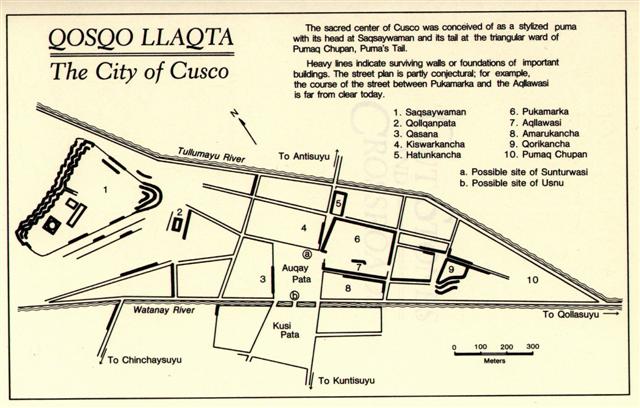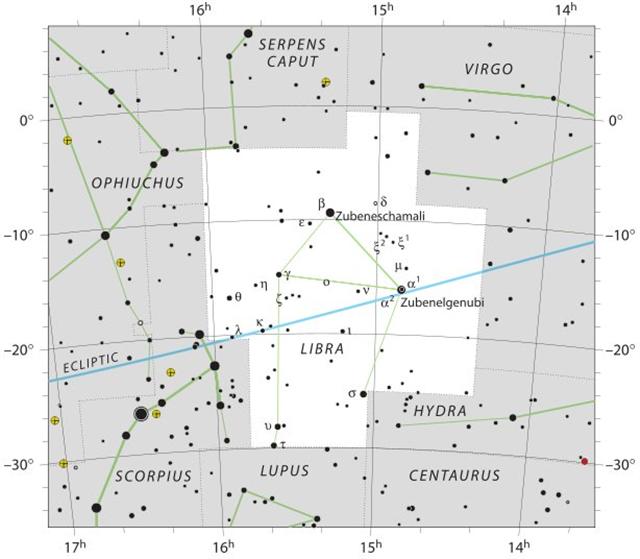118. At the time of rongorongo Virgo had moved ahead
in the year to a place which was half the
equinoctial cycle ('year') away from its natural origin at
the northern spring equinox. 26000 / 2 = 13000 =
1842 AD + 11158 BC (there was no year 0), and 12500 BC (Spica) - 11158 BC
= 1342 (= 71 * 18.9):
From 14000 BC to 6200 AD there are 20200 years -
possibly alluding to the place of Spica in modern times,
viz. *202. And 26000 - 20200 = 5800, possibly alluding to 2 * 29½,
but also to 8 (dark nights before Venus returned as
Morning Star) + 50 (dark nights before Venus returned as
Evening Star).
Spica (12500 BC) + (14000 - 12500) = *202.7 + 1500 /
71 = *223.8 (μ Librae):
When Alnilak (ζ Orions) once upon a time
had risen with the Sun at 0h then Spica would have been
118 right ascension days later in the year, viz. in day
*118:
|
MARCH 29 (88) |
30 |
31 |
APRIL 1 |
 |
 |
 |
 |
|
Ca9-27 (255) |
Ca10-1 (256 = 4 * 64) |
Ca10-2 |
Ca10-3 |
|
etoru gagata hakaariki kia raua |
Erua inoino |
kua hua te vai |
|
INVISIBLY CLOSE TO THE SUN (helical
dates): |
|
π4 Orionis (72.1), ο¹ Orionis
(72.4), π5 Orionis (72.8) |
π¹ Orionis (73.0), ο² Orionis
(73.4),
HASSALEH = ι Aurigae
(73.6), π6 Orionis (73.9) |
ALMAAZ = ε Aurigae
(74.7),
HAEDUS I = ζ Aurigae
(74.8) |
HAEDUS II = η Aurigae
(75.9) |
|
June 1 (152) |
2 |
3 |
4 (155) |
|
APRIL 2 |
3 |
4 |
5 |
 |
 |
 |
 |
|
Ca10-4 |
Ca10-5 (260) |
Ca10-6 (9 * 29) |
Ca10-7 |
|
te kiore - te
inoino |
kua oho te rima
kua kai - ihe nuku hoi |
Tupu te toromiro -
kua noho te vai |
|
INVISIBLY CLOSE TO THE SUN (helical
dates): |
|
ε Leporis (76.0),
CURSA = β Eridani
(76.4), λ Eridani (76.7) |
μ Aurigae, μ Leporis (77.6) |
ĸ Leporis (78.0),
RIGEL
(Foot) = β Orionis
(78.1),
Flaming Star = IC405 (78.2),
CAPELLA = α Aurigae
(78.4), ο Columbae, τ Orionis (78.8)
THUBAN
(α Draconis) |
λ Aurigae (79.0), λ Leporis (79.6),
ρ Aurigae (79.7)
ARCTURUS
(α Bootis)
|
|
June 5 |
6 |
7 (*78) |
8 |
|
Vaitu Nui 25
(115) |
"April 26 |
27 |
28 |
|
APRIL 6 |
7 |
8 |
9 |
10 (100 = 164 - 64) |
 |
 |
 |
 |
 |
|
Ca10-8 |
Ca10-9 (264 = 305 - 41) |
Ca10-10 |
Ca10-11 |
Ca10-12 |
|
te moko |
te marama |
te kava |
manu rere |
te
mauga tuu toga |
|
INVISIBLY CLOSE TO THE SUN (helical
dates): |
| |
|
MINTAKA = δ Orionis |
ALNILAM = ε Orionis |
ALNITAK = ζ Orionis,
HEAVENLY GATE = ζ Tauri, PHAKT = α
Columbae |
|
June 9 |
10 (161) |
11 |
12 |
13 (*84 = 3 * 28) |
|
'May 13 |
14 (134 = 161 - 27) |
15 |
16 |
17 (*57 = 3 * 19) |
|
"April 29 |
30 (120 = 161 - 41) |
"May 1 (11 * 11) |
2 |
3 (*43) |
|
84 * 71 = 1842 AD + 4122 BC |
*0 = (100 - 80) - 20 |

|
183 + 116 |
INVISIBLY CLOSE TO THE SUN (helical
dates): |
|
FEBRUARY 3 |
4 |
5 (36) |
6 |
7 (403 = 365 + 38) |
 |
 |
 |
 |
 |
|
Cb8-4 |
Cb8-5 |
Cb8-6 (177) |
Cb8-7 (570) |
Cb8-8 |
|
te hokohuki |
te moko
- vero hia |
tagata honui |
e ha mata |
|
CLOSE TO THE FULL MOON (and nakshatra dates): |
|
AUGUST 5 |
6 |
7 (219 = 36 + 183) |
8 (*140) |
9 |
| |
SPICA, ALCOR |
|
|
|
October 8 |
9 (*202 = *84 + *118) |
10 (283) |
11 |
12 |
|
'September 11 |
12 (*175) |
13 (256) |
14 |
15 |
|
"August 28 |
29 (*161) |
30 (242 = 177 + 65) |
31 |
"September 1 |
|
*117 |
*118 |
*119 |
*120 = *140 - 20 |
*121 |
The layout of the 3 great Gizah pyramids was
probably intended to reflect the 3 Belt Stars in
the center of Orion. However, precise measurements pointed not
at 4122 BC when Orion (Alnitak, ζ) was at 0h but to
the time when the hind quarters of Leo had been at
0h.
"... the real surprise revealed by Bauval's
astronomical calculations was this: despite the fact
that some aspects of the Great Pyramid did relate
astronomically to the Pyramid Age, the Giza
monuments as a whole were so arranged as to provide
a picture of the skies (which alter their appearance
down the ages as a result of the precession of the
equinoxes) not as they had looked in the Fourth
Dynasty around 2500 BC, but as they had looked - and
only as they had looked - around the year
10,450 BC." (Hancock)

.jpg)



10450 BC + 1842 AD = 12292 = 71 *
173.1. At the time of the Bull this place had been
where the Sun rose in JULY 8 (7-8, day 189), i.e. 4
days after Zosma (δ
Leonis) and Coxa (θ Leonis):
|
JULY 2 |
3 (184) |
4
(*105) |
 |
 |
 |
|
Ga4-20 |
Ga4-21 (104) |
Ga4-22 |
| |
|
ZOSMA (Girdle) = δ Leonis, COXA
(Hips) = θ
Leonis |
|
*83 |
*84 |
*85 = *105 - 20 |
|
APRIL 6 |
7 |
8 |
9 |
10 (100 = 164 - 64) |
 |
 |
 |
 |
 |
|
Ca10-8 |
Ca10-9 (264 = 305 - 41) |
Ca10-10 |
Ca10-11 |
Ca10-12 |
|
te moko |
te marama |
te kava |
manu rere |
te
mauga tuu toga |
|
INVISIBLY CLOSE TO THE SUN (helical
dates): |
| |
|
MINTAKA = δ Orionis
KHUFU |
ALNILAM = ε Orionis
KHAFRE |
ALNITAK = ζ Orionis
MENKAURE |
|
June 9 |
10 (161) |
11 |
12 |
13 (*84 = 3 * 28) |
|
'May 13 |
14 (134 = 161 - 27) |
15 |
16 |
17 (*57 = 3 * 19) |
|
"April 29 |
30 (120 = 161 - 41) |
"May 1 (11 * 11) |
2 |
3 (*43) |
|
84 * 71 = 1842 AD + 4122 BC |
*0 |
|
... Menkaure was allegedly a
much more benevolent Pharaoh than
his predecessors. According to
legends related by Herodotus, he
wrote the following:
This Prince (Mycerinus)
disapproved of the conduct of his
father, reopened the temples and
allowed the people, who were ground
down to the lowest point of misery,
to return to their occupations and
to resume the practice of sacrifice.
His justice in the decision of
causes was beyond that of all the
former kings. The Egyptians praise
him in this respect more highly than
any other monarchs, declaring that
he not only gave his judgements with
fairness, but also, when anyone was
dissatisfied with his sentence, made
compensation to him out of his own
purse and thus pacified his anger.
The Gods however ordained that Egypt
should suffer tyrannical rulers for
a hundred and fifty years according
to this legend. Herodotus goes on:
An oracle reached him from the town
of Buto, which said 'six
years only shalt thou live upon this
earth, and in the seventh thou shalt
end thy days'. Mycerinus,
indignant, sent an angry message to
the oracle, reproaching the god with
his injustice - 'My father and
uncle,' he said 'though they shut up
the temples, took no thought of the
gods and destroyed multitudes of
men, nevertheless enjoyed a long
life; I, who am pious, am to die
soon!'
There came in reply a second message
from the oracle - 'for this very
reason is thy life brought so
quickly to a close - thou hast not
done as it behoved thee. Egypt was
fated to suffer affliction one
hundred and fifty years - the two
kings who preceded thee upon the
throne understood this - thou hast
not understood it'. Mycerinus,
when this answer reached him,
perceiving that his doom was fixed,
had lamps prepared, which he lighted
every day at eventime, and feasted
and enjoyed himself unceasingly both
day and night, moving about in the
marsh-country and the woods, and
visiting all the places he heard
were agreeable sojourns. His wish
was to prove the oracle false, by
turning night into days and so
living twelve years in the space of
six
... |

|












.jpg)






